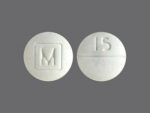Showing all 8 results
-
Oxycodone 10 mg
$538.00 – $1,514.00Buy Now This product has multiple variants. The options may be chosen on the product page -
Oxycodone 80 mg
$579.00 – $1,547.00Buy Now This product has multiple variants. The options may be chosen on the product page -
Oxycodone 30 mg
$562.00 – $1,529.00Buy Now This product has multiple variants. The options may be chosen on the product page -
Oxycodone 20 mg
$558.00 – $1,524.00Buy Now This product has multiple variants. The options may be chosen on the product page -
Oxycodone 60 mg
$572.00 – $1,541.00Buy Now This product has multiple variants. The options may be chosen on the product page -
Oxycodone 15 mg
$548.00 – $1,519.00Buy Now This product has multiple variants. The options may be chosen on the product page -
Oxycodone 5 mg
$533.00 – $1,507.00Buy Now This product has multiple variants. The options may be chosen on the product page -
Oxycodone 40 mg
$567.00 – $1,537.00Buy Now This product has multiple variants. The options may be chosen on the product page
Oxycodone is a doctor’s prescribed medication used to treat moderate to severe pain that continues the whole day. The extended-release form of oxycodone is for the complete remedy of pain. Its effect starts from 15 minutes and ends up to 6 hours. It reduces body pain slowly and makes feel a person better.
More About Oxycodone:
Oxycodone belongs to a class of drugs called Opioid Analgesics. It is sold under different brand names such as Oxycontin, Roxicodone, Xtampza ER, OxyIR, etc. It works inside the brain and alternates how your body feels and responds to the pain.
It is an extended-release medication that works up to 5-6 hours on the body and gets us relieved of ongoing severe pain. This medicine contains opioid (narcotic), which is much more powerful than other normal pain reliever medicine.
Oxycodone was first made in Germany in the year 1916. It came to the U.S.A. market in the year 1939. Its generic medication was soon invented afterward. It is one of the most used analgesics used for surgery in the U.S.A.
Use Of Oxycodone:
Oxycodone is a doctor’s prescribed medication used to treat moderate to severe pain that continues the whole day. The extended-release form of oxycodone is for the complete remedy of pain. Its effect starts from 15 minutes and ends up to 6 hours. It reduces body pain slowly and makes feel a person better.
Controlled Release Oxycodone Tablets Composition:
Oxycodone contains both active and inactive ingredients in it. Each Oxycodone tablet contains 5 mg/10 mg/15 mg/20 mg/30 mg/40 mg/60 mg/80 mg/120 mg of Oxycodone Hydrochloride as the active ingredient and microcrystalline cellulose, sodium starch glycolate, corn starch, lactose, stearic acid, D&C Yellow No. 10 (15 mg tablet) and FD&C Blue No. 2 (15 mg and 30 mg tablets) as inactive ingredients.
Dosage Information Of Oxycodone:
The dose for taking Oxycodone is different for different patients and different age groups. The dose depends upon the level of pain one is ongoing.
Oxycodone is generally not prescribed to children.
The dosages for adults are:
For Acute Pain:
- Initially, 5-15 mg is given every 4-6 hours.
- The dose may be increased or decreased gradually as per the advice of the doctor.
- The dose should be increased considering the side effects of the medication on a specific person.
For Chronic Pain:
- Initially, 2.5-10 mg is prescribed every 4-6 hours.
- The dose may be increased or decreased gradually as per the advice of the doctor.
Overdose, Missed Dose, And Withdrawal Symptoms:
Overdose:
An overdose of any medication is dangerous to our health, so an overdose of Oxycodone also has some bad effects on our health. Overdose of Oxycodone leads to severe drowsiness, pinpoint pupils, slow breathing or no breathing, pounding heartbeat, dizziness, and coma.
Missed Dose:
Taking medicine at an improper time and irregularly leads to a missed dose. People after missing a dose usually take a double dose which leads to an overdose. In case you miss a dose, do not panic. Take the dose immediately or continue with your regular dose or consult your doctor.
Withdrawal Symptoms:
Symptoms that are shown when any medicine is stopped suddenly or accidentally are called withdrawal symptoms. All Opioid Analgesics have their withdrawal symptoms, hence Oxycodone. The symptoms are fever, restlessness, bone and muscle pain, insomnia, diarrhea, severe chills, increased sensitivity to pain, increased heart rate and blood pressure, and weakness.
How Oxycodone Reacts To Pain:
Oxycodone is a product of Opioid analgesics. When Oxycodone travels to the brain through the bloodstream, the chemicals attach to the brain cells. The linkage of these chemicals with the receptors produces the same biochemical processes that give people the feeling of pleasure in their day-to-day life activities.
How To Store Oxycodone?
The procedures for storing Oxycodone are:
- It is stored at a temperature between 20- 25 degrees Celcius i.e. 68- 77 degrees Fahrenheit i.e. at room temperature.
- The medicine should be kept away from light and moisture.
- It should not be stored in the bathroom.
- It should not be kept inside the refrigerator.
Oxycodone Side Effects:
Any medicine when used improperly shows dangerous side effects hence Oxycodone shows. It shows both common and serious side effects.
Common Side Effects:
The common side effects are:
- Drowsiness
- Dizziness
- Lightheadedness
- Sweating
- Weakness
- Dry mouth
- Constipation
- Vomiting
- Nausea
- Red eyes
- Flushing
- Itching
Serious Side Effects:
The serious side effects are:
- Noisy breathing
- Sighing
- Shallow breathing
- Breathing that stops during sleep
- Slow heart rate or weak pulse
- Unusual thoughts or behavior
- Seizure
- Confusion
- Low cortisol levels
- High level of serotonin in the body
- Cold and clammy skin
Alternatives For Oxycodone:
There are both natural and medicinal alternatives for Oxycodone.
Natural Alternatives:
The natural alternatives are:
- Boswellia
- Turmeric
- Cloves
- Acupuncture
- Heat and ice
Medicinal Alternatives:
The medicinal alternatives are:
- Demerol
- Dolophine
- Methadose
- Kadian
- Mophabond
- Oxycontin
- Motrin
- Tylenol
- Bayer
- Steroids
Precautions Before Taking Oxycodone (Warnings)!
Some precautions are needed to be taken by patients suffering from severe pain before taking Oxycodone. These are:
- Test whether you are allergic to Oxycodone or any other Opioids.
- Describe both your physical and mental history before the doctor.
- Tell your doctor if you were drug abused in the past as Oxycodone is habit forming.
- Oxycodone is not prescribed for those who have kidney disease, liver disease, glaucoma, lung/ breathing problems, or mental disorder.
- As drowsiness is one of its side effects, one should not drive, should not operate any machine, or do any serious work as it can be dangerous.
- Do not wake up suddenly after sleep as it causes lightheadedness, dizziness, and fainting.
- Oxycodone causes constipation. So tell your doctor to change your diet accordingly.
- Using Oxycodone while pregnant can cause birth defects or life-threatening symptoms in the newborn baby.
- Breastfeeding mothers are advised to first consult a doctor and follow the advice.
Food And Medicines That Interact With Oxycodone:
One should make it clear to the doctor if he/she is taking any other medicines before the doctor prescribes Oxycodone as it can be dangerous if some specific medicines are taken with it.
Medicine Interactions:
Do not take these medicines with Oxycodone:
- Butorphanol
- Nalbuphine
- Pentazocine
- Naltrexone
- Samidorphan
Food And Beverage Interaction:
Do not take these food items and beverages with Oxycodone:
- Grapefruit
- Grapefruit juice
- Alcohol
- Cannabis
- Cigarette
- Alcohol leads to drowsiness. So taking alcohol along with Oxycodone can cause severe drowsiness, dizziness, tiredness, and body imbalance.
- Cigarette smoking with Oxycodone may decrease the effectiveness of the drug.








